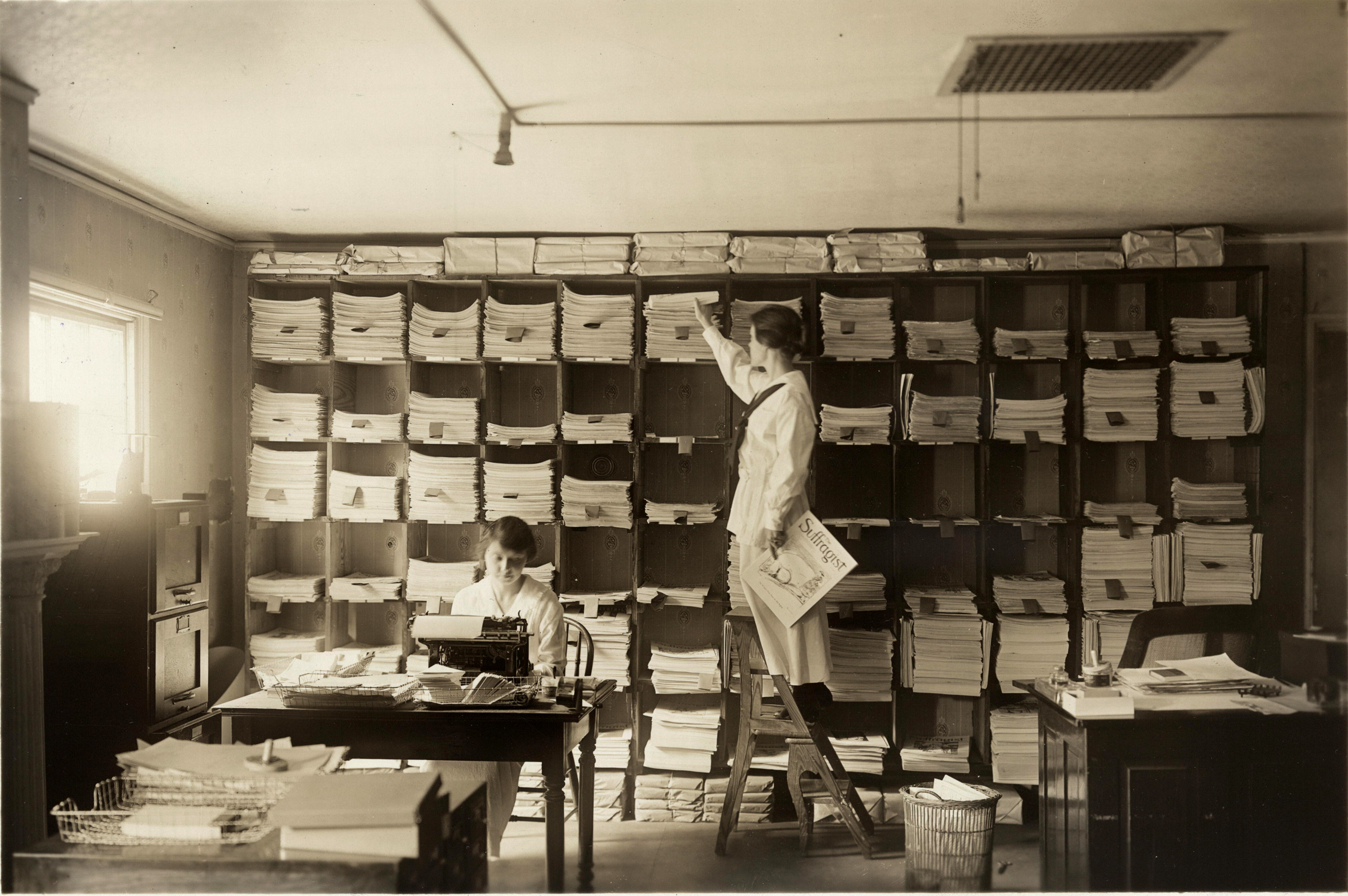By Marieke Van Damme
This article originally appeared in the Fall 2015 edition of New England Museums Now

Could your workplace be better? Could your relationships with your coworkers be stronger?
Do you wish your boss, or your boss’s boss, really knew and appreciated all you did for the museum? If your workplace was more positive, would you work harder, strive to be better in all that you do, and produce your best work?
Let’s say you answered yes to most of these questions. What about your coworkers? What if you asked this question at your next staff meeting and got honest results from everyone seated around the table? Chances are that out of a group of twenty people, only two or three would say they are engaged with their work. Just a handful. The rest of those coworkers? They are most certainly not giving their all. This may not come as a surprise to you because you might actually be one of them.
In January 2015, the research firm Gallup released figures from its latest study of American workers showing that less than a third (31.5%) of employees were “engaged in their jobs;” Gallup defines engaged workers as “those who are involved in, enthusiastic about and committed to their work and workplace.”[1] Although engagement numbers are up from previous years, it is clear from this and other studies that people across the country and across industries are dissatisfied and disengaged at work.
Museum workers are no exception. Working in small museums in the Boston area for over a dozen years, I saw through my own eyes and those of friends and colleagues my fair share of workplaces that fell short of their potential. You likely know and have heard the stories of negative environments, too. Whether it’s a board member making defeating comments, or open rudeness going unchecked in meetings, or your value being determined by your knowledge of where objects are in storage, you can’t blame someone for asking: “I spent years in grad school for this?”
It wasn’t until I stepped away the museum field for a period of academic study that I looked back on my workplace experiences. I decided to test and explore my hypothesis that museum workplaces lean more on the unhealthy side. In the summer of 2014, I launched my project, Joyful Museums, with a survey asking museum colleagues about their workplace experiences. About 200 respondents submitted their perspectives. Most individuals were from the Midwest and East Coast. Nearly half were mid-career professionals. Art museums/galleries and history museums were most represented (for complete breakdown of survey results, please visit www.JoyfulMuseums.com).
The results, unfortunately, confirmed my suspicions. It is entirely possible that happy and engaged museum workers opted out of the study. Nevertheless, the data I gathered offers valuable insight into a phenomenon affecting the museum community that we, as a field, aren’t talking about.
Survey Says
In the survey, when asked “Do you feel you work in a culture that is positive and healthy?” only 7% answered yes, they work in an organization that is “very positive and healthy”. Put another way, 93% indicated that their workplace could be better.
I designed the survey to get qualitative input as well as hard data. And the stories I got are troubling. There are tales of disrespectful coworkers, inept leadership, and unethical (even potentially illegal) activity.
Even after the results came in, I still hoped they weren’t telling the whole story. So I presented these survey results at the 2014 NEMA Conference at a session titled, Worst. Job. Ever? and wished to be told the picture they painted was wrong. That didn’t happen. The conference room was full, the questions and comments poignant, and the conversations over the rest of the conference enlightening. They underlined to me that museum workplace culture has problems, and we need to start talking about how to make them better.[2]
How Did We Get Here?
“Every museum is an amazing place to work at first. Burnout and lack of career steps makes them a hard industry to stay in.”
Here are some issues the survey and subsequent discussions highlighted to help explain why museum workplaces are often unhealthy, and why they could be better:
Intense job competition. In recent years, the museum field has started a conversation about the issue of oversaturation due to an increase in museum-related degrees out of sync with available or anticipated museum jobs. We have so flooded the market that many museums have their pick of potential employees for even entry-level jobs. With so much competition, some who already have jobs feel less compelled to suggest improvements at work, lest they put themselves at risk of being let go or passed over for a prized promotion because they are “troublemakers.” There’s also often an understanding that our skillsets are too specialized for us to find a job outside of the museum field. My survey showed that many museum workers feel trapped: we love what museums represent and believe in the work we do, so we stay, because at least we have a job.
Low wages for workers. The increase in competition for jobs is also reflected in wages. In my survey, 86% of respondents identified “People not getting paid what they are worth” as an issue in their workplace.[3] The recently published 2014 National Comparative Museum Salary Survey and corresponding analysis in the January/February 2015 issue of Museum outlines the many issues of pay in the museum field. However, even though many museum workers want an increase in pay, they should not expect to be happier at work as a result of a raise. Researchers have shown that a raise provides only a temporary spike in happiness at work; after a while, happiness levels return to “normal.”[4]
“In a previous job, my work week averaged 65 hours, plus additional time on my phone/email at home. I never received an ‘exceeds expectations’ performance review and was in fact managed pretty harshly by my boss. I got a couple of promotions, but never a raise that was competitive with salaries for similar roles in my geographic area. The general overwork, lack of recognition, and frequent punishments for minor mistakes (which are going to happen when you’re that burnt out) were demoralizing and for years I felt like I was being taken advantage of.”
Museum workers are often promoted because of content knowledge, not because of leadership ability. Museum work often requires a very specific skillset and knowledge base, and opportunities for career advancement can be limited. When someone has been working and succeeding in a content-based role, you want to reward that effort through a promotion to manager or supervisor. Unfortunately, such a track may confuse management with leadership. Not all workers are inherently able to craft vision and lead a team. Not all of us were taught these skills, either. Many museum studies programs increasingly understand the value of teaching organizational behavior and other leadership skills that the for-profit sector has valued for years.
Too much on workers’ plates. The refrain of “do more with less,” especially in conjunction with low wages and unsupportive environments, can lead to burnout.
“It was not one particular event, but a series of small (ok, some pretty big) events that led me to the realization that people were not really concerned with the institution. I also realized that the constant (constant!) drum beat of ‘there’s not enough money’ was used as an excuse for overall poor quality work and negative work environments.”
Decreasing support for professional development. Meanwhile, when resources are limited, training may be viewed as unessential. It is often one of the first benefits to be eliminated, especially for workers new to the role or with less seniority. And when it does get reinstated, museums tend to prioritize hard skills like “How to Make Exhibits on a Shoestring Budget” over soft skills like time management, communication skills, or how to work with intergenerational teams. The benefit of these types of skills is harder to quantify, and therefore justify, when staring at the profit and loss sheets each month. When workers have taken on more tasks and are working outside of their normal hours to get things done, when is there time to learn new skills and grow as a professional?
Sharing of duties typically handled by human resources. Many museums combine the human resources department with another role, such as administration or finance, to save money. Unfortunately, at some museums this can means staff is less-equipped to handle issues in a highly professional manner. In the survey, only 12% said they bring workplace issues to HR; some respondents noted that HR representatives at their museums are often perceived as unhelpful, unwilling to address issues, or untrustworthy.
“I was treated poorly and/or belittled by my supervisor and when I contacted Human Resources they told me they did not believe it because I work at such a wonderful organization.”
Museums are often slow to change. Unfortunately, with great history often comes a glacial pace of change. Our museums are often a hundred years old and carry with them the great traditions, but also the institutional baggage, of such a long tenure. They are often not as nimble as a start-up and could take years to adopt new ideas. Additionally, museum leadership—both boards and CEO—are often predominantly characterized by the Boomer generation with long-established ideas for leadership. Introducing a new way of thinking about work and professional development may not be taken seriously.
Why Improve Workplace Culture?
The connection between engaged employees and a positive return on organizational investment is now well-documented. In 2014, Gallup published the results of a study that exhibits the “well-established connection between employee engagement and key performance outcomes” such as customer ratings, profitability, productivity, turnover, safety incidents, theft, absenteeism, and quality.[5]
The work of Shawn Achor, author of The Happiness Advantage: The Seven Principles of Positive Psychology That Fuel Success and Performance at Work, challenges the assumption that working hard makes us successful and therefore happy; instead, he claims that it is being happy and engaged that makes us work harder and therefore become successful. In a 2011 Harvard Business Review article he demonstrated that increasing the happiness of workers increases sales by 37%, productivity by 31%, and accuracy on tasks by 19%.[6] With solid research now in place, much attention is being paid to the best practices of worker engagement developed and implemented at for-profit organizations. The University of Michigan’s Ross School of Business established a Center for Positive Organizations in 2002 to “enable leaders to build high-performing organizations that bring out the best in people.” For example, companies have now created apps to help you track your employees’ moods over time to compile a “team happiness index.” It is clear that high worker engagement is important to many successful organizations for altruistic but also financial reasons.
Museums would be wise to pay attention to this growing and increasingly established field. An open-ended question on my survey, “If something about your workplace culture was improved, how would this change the way that you work, both in the short and long term?” produced answers that resonate with current research outlined above. Museum workers said they would produce higher quality work, go “above and beyond” their assigned duties, stay at the organization longer, and stop looking for jobs on a sometimes daily basis. Attempts to improve the culture in our museum workplaces would no doubt result in less turnover, higher engagement, and, ultimately, a better museum experience for the public. In aggregate, all museums would benefit.
“I actually *just* left this position for another workplace. I was the fourth person in my department to leave this year. If there had been any sign at all that folks above me were willing to do the hard work of changing the culture and the actual *work* we were allowed to do, I would have stayed.”
Bright Spots
Although there are many obstacles to overcome, improving workplace culture is not an insurmountable task. As best-selling authors Chip Heath and Dan Heath outline in Switch: How to Change Things when Change is Hard, positive change can be achieved by exploring and expanding on what already works, areas they call “bright spots.” Here are three bright spots my survey identified:
We enjoy our coworkers. When asked about the positive aspects to our work in museums, friendships with coworkers rises to the top of the list. Almost 90% of respondents said being at happy at work depends on enjoying the people they work with and having work friends. These valued colleagues not only provide camaraderie, but they also serve as confidantes and creative partners who help us find meaning and engagement at work. These relationships endure even after moving on to other organizations. Encouraging the workplace friendships that already exist and allowing new ones to grow should be a priority for museum leadership.
We know where we can improve. When asked “What would make your workplace culture better?” the top four answers were: increase in pay, culture of appreciation, greater transparency, and training on effective communication strategies. While raising salaries might be a challenge, the other areas for improvement are either low-cost or largely free, costing only staff time. You, and everyone at your museum, have the ability and opportunity to tackle these other areas for improvement.
We want our workplace culture to change. The results of my survey indicate not only are most of you thinking about workplace culture (93%), you are already trying to make change. Leadership can and should harness this willingness to make improvements. Examples of successful employee engagement efforts reported in my survey include planning outings for staff, small appreciation parties, tweaking a staff meeting format, and simply writing thank-you notes to colleagues. Examples of failed attempts cite lack of leadership buy-in as the primary reason for defeat. Again, the majority of these changes can start with anyone, at any level, at your museum.
What now?
All museum workers, at any and all levels, can help improve workplace culture. Here are three ways you can make an impact today:
- Ask someone if there is anything you can do to help them. They might not take you up on it, but doesn’t it feel good to ask, and be asked?
- Write a thank-you. An email, notecard, or post-it note are all acceptable ways to express gratitude to a colleague. Try all three!
- Be kind. Remember, we are all human beings. We don’t stop being human—nor should we—just because we are at work. So try extra hard today to be kind (forgiving/patient/understanding) to those around you.
If you are unhappy at work, please know that you are not alone. Lots of museum workers are, but many are actively taking steps to improve their situation. You can, too. Together we can make work better.

[1] http://www.gallup.com/poll/181289/majority-employees-not-engaged-despite-gains-2014.aspx?
[2] People across the globe find their workplaces challenging and struggle to find meaning in their day to day work; this is not a museum-specific problem, or even a not-for-profit problem. But it does exist in museums.
[3] This can be interpreted as low-paid workers deserving more, but also that some high-paid workers are paid too much. However, free-form answers suggested low salaries as the prevailing issue.
[4] http://business.time.com/2013/10/28/5-reasons-your-job-is-making-you-miserable/ A 2009 study published in the Personality and Social Psychology Bulletin (PSPB) even suggests that hourly workers are happier at work than salaried employees. http://www.eurekalert.org/pub_releases/2009-12/sp-heh121009.php
[5] http://www.gallup.com/businessjournal/166667/five-ways-improve-employee-engagement.aspx
[6] https://hbr.org/2011/06/the-happiness-dividend/. Achor’s popular TED talk on this topic can be found at: https://www.ted.com/speakers/shawn_achor.
